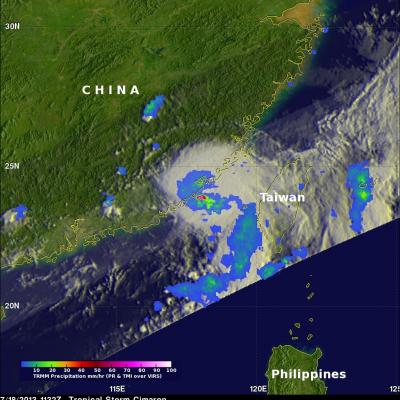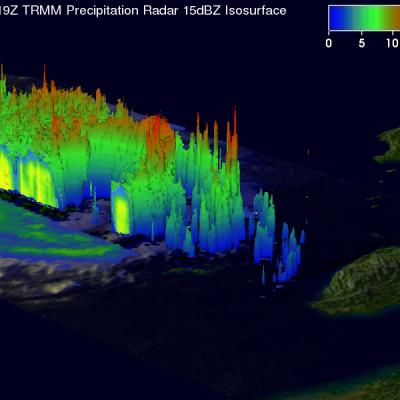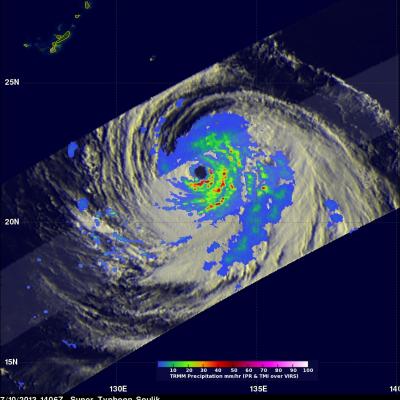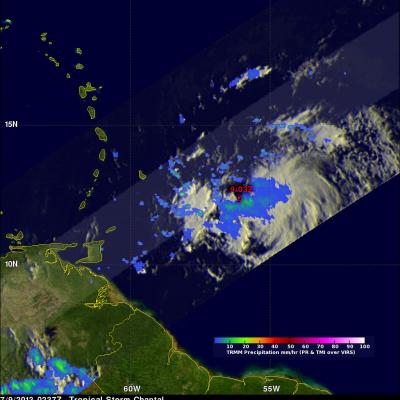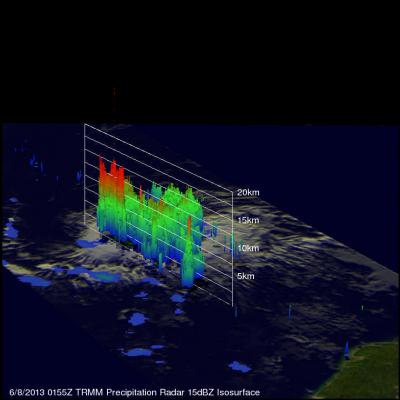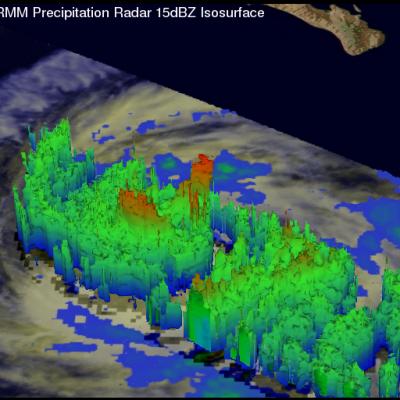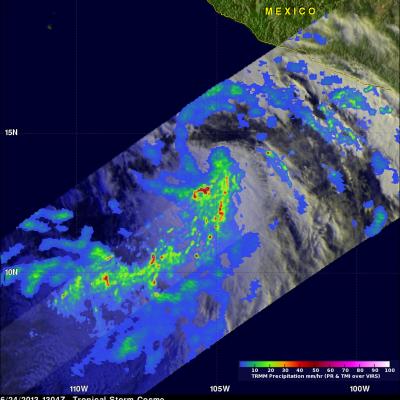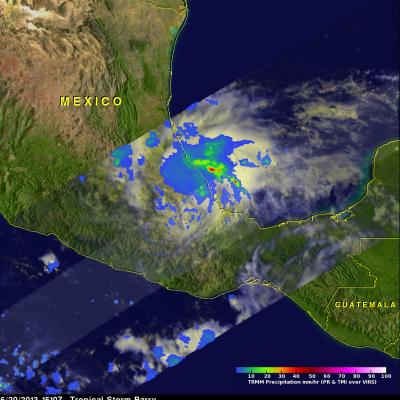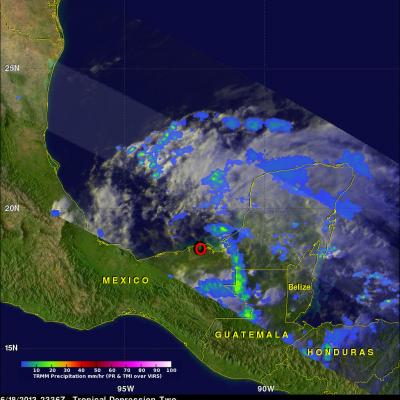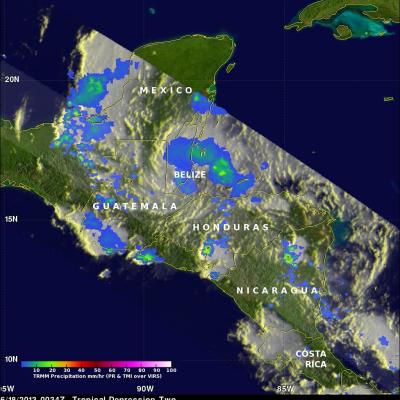Tropical Storm Cimaron Brings Beneficial Rain To China
The image on the left used data captured by the TRMM satellite when it passed above tropical storm Cimaron on July 18, 2013 at 1132 UTC (~7:32 PM Local) just before it hit southeastern China. Rainfall was measured by TRMM's Microwave Imager (TMI) and Precipitation Radar (PR) instruments to be falling at a rate of over 183mm/hr (~7.2 inches) in a small area near Cimaron's center of circulation. TRMM PR found some radar reflectivity values greater than 55dBZ in these heavy rainshowers. Cimaron's track took it to the south of Taiwan yesterday. The rainfall anomaly analysis on the right was made


